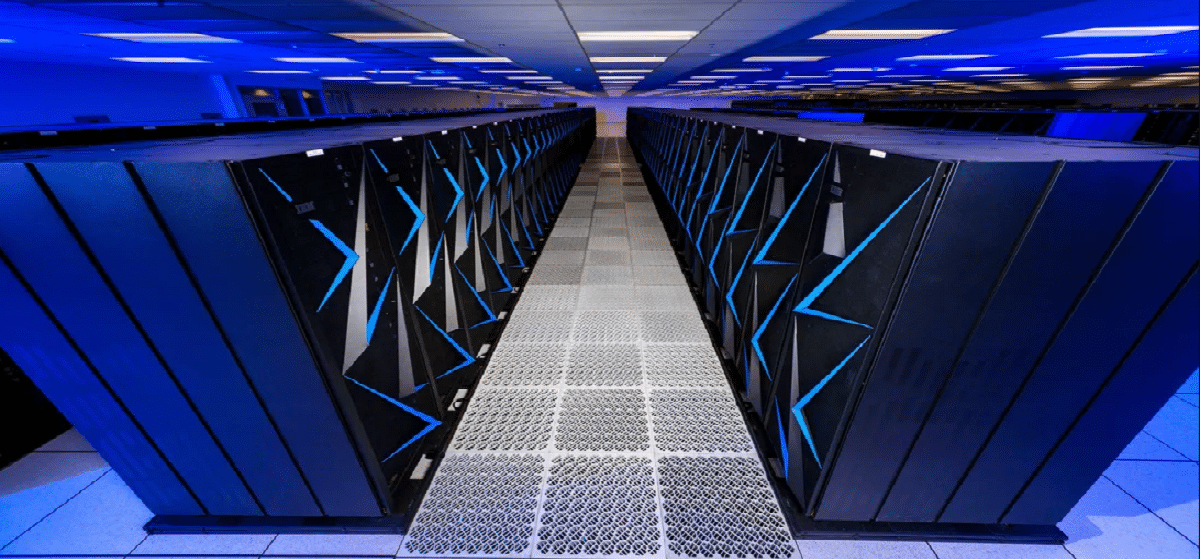
The publication of the 59th edition of the ranking of the 500 computers with the highest performance of the world. In the new edition, the top ten included three new clusters, which secured their first, third and tenth place.
First place went to the new Frontier, located at the United States Department of Energy's Oak Ridge National Laboratory. the cluster it has nearly 9 million processor cores (AMD EPYC 64C 2GHz CPU, AMD Instinct MI250X Accelerator) and delivers 1102 petaflops performance, which is nearly three times the previous leader. At the same time, Frontier's power consumption is 30% lower than the previous leader.
The Japanese Fugaku cluster built with ARM processors (158976 nodes based on Fujitsu A64FX SoC, equipped with 8.2-core 2,2GHz Armv48-A SVE CPU) went to second place. The Fugaku cluster is hosted at the RIKEN Institute for Physical and Chemical Research and provides a performance of 442 petaflops. The operating system is Red Hat Enterprise Linux.
Third place was taken by the new LUMI cluster, hosted at the European Supercomputing Center (EuroHPC) in Finland and offering a performance of 151 petaflops. The cluster is based on the same HPE Cray EX235a platform as the new leader in the ranking, but includes 1,1 million processor cores (AMD EPYC 64C 2GHz, AMD Instinct MI250X accelerator, Slingshot-11 network). This platform is also used in the French cluster Adastra, which is ranked 10th and has 319.000 processor cores (total performance of 46 petaflops).
The cluster Summit, deployed by IBM at Oak Ridge National Laboratory (USA), fell to fourth place. The cluster runs Red Hat Enterprise Linux, includes 2,4 million processor cores (using 9-core IBM Power22 3,07C 22 GHz CPUs and NVIDIA Tesla V100 accelerators), providing 148 petaflops of performance.
As for home supercomputers, groups Chervonenkis, Galushkin and Lyapunov created by Yandex fell from 19th, 36th and 40th places to places 22, 40 and 43. These clusters are designed to solve machine learning problems and offer performance of 21,5, 16, and 12,8 petaflops, respectively. Clusters run Ubuntu 16.04 and are equipped with AMD EPYC 7xxx processors and NVIDIA A100 GPUs: Chervonenkis cluster has 199 nodes (193K AMD EPYC 7702 64C 2GH cores and 1592 NVIDIA A100 80G GPUs), Galushkin: 136 nodes (134K AMD EPYC 7702 cores 64C 2GH and 1088 NVIDIA A100 80G GPUs), Lyapunov – 137 nodes (130 thousand AMD EPYC 7662 64C 2GHz cores and 1096 NVIDIA A100 40G GPUs).
The Christofari Neo cluster deployed by Sberbank fell from 43rd to 46th place. Christofari Neo runs NVIDIA DGX OS 5 (Ubuntu Edition) and offers 11,9 petaflops of performance. The cluster has over 98k cores based on AMD EPYC 7742 64C 2.25GHz CPU and comes with NVIDIA A100 80GB GPU. The second group of Sberbank (Christofari) has risen from 72nd to 80th place in the ranking in half a year.
The most interesting trends are the following. Distribution by number of supercomputers in different countries:
- China: 173 (173 – half a year ago). In total, Chinese clusters generate 12% of all productivity (six months ago, 17,5%)
- USA: 127 (149). Total performance is estimated at 47,3% of the total rating performance (six months ago – 32,5%)
- Japan: 34 (32). Total productivity – 14,3%
- Germany: 31 (26). Overall Productivity – 11,5%
- France: 22 (19)
- Canada 14 (11)
- UK: 12 (11)
- Russia 7 (7)
- Netherlands: 6 (11)
- Italy: 6 (6)
- Brazil 6 (5)
- South Korea 6 (7)
- Saudi Arabia 6 (6)
- Poland 5 (4)
- Australian 5 (3)
- Sweden 5 (4)
- Switzerland 4 (3)
- Finland: 4 (3).
In the ranking of operating systems used in supercomputers, only Linux has held its own for five years:
- 47,8% (51,6%) do not detail the distribution
- 18.2% (18%) use CentOS
8,8% (7,6%) - RHEL - 8% (7%) CrayLinux
- 5,2% (5,4%) - Ubuntu
- 3,8% (4%) – SUSE
- 0.8% (0%) – Soul Linux
- 0,6% (0%) – RockyLinux
- 0,2% (0,2%) - Scientific Linux
The minimum performance threshold to enter the Top500 has not changed for 6 months and it is 1,65 petaflops (six months ago, 56 clusters showed a performance of 1,65 petaflops, now – 20). Three years ago only 272 clusters showed performance over petaflops, four years ago 138, five years ago 94). For the Top100, the entry threshold increased from 4,78 to 5,39 petaflops;
the overall yield of all systems in the ranking increased from 3,04 to 4,40 exaflops in 6 months (two years ago it was 1,650 exaflops and five years ago it was 566 petaflops). The system that closes the current ranking was ranked 464th in the last issue.
A new version of the alternative Graph 500 rating of cluster systems is expected to be released in the near future. The Green500, HPCG (High-Performance Conjugate Gradient) and HPL-AI ratings are combined with the Top500 and reflected in the main Top500 ranking.
Finally, if you are interested in knowing more about it, you can consult the details In the following link.